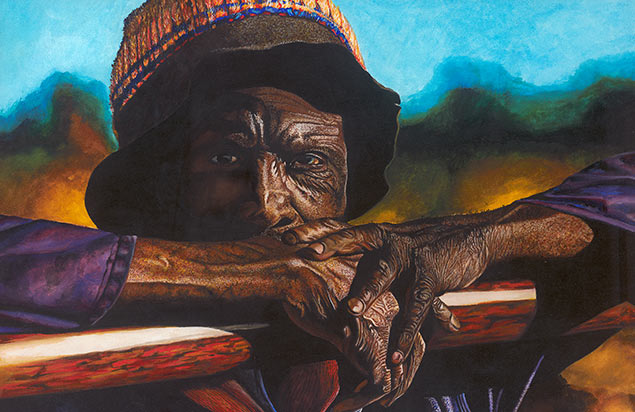Hope in Hard Times

Exhibit Highlights Art by Incarcerated Individuals
By Emily Cummins, Public Relations Coordinator
The Moravian Church’s Eastern District, Moravian Seminary in Bethlehem and ArtsQuest are proud to partner with Art for Justice to bring an engaging art exhibit, “Hope in Hard Times,” to the Banana Factory March 1–April 7. Artists in the show include George Lopez, Danny Gwynn, Luis Gonzalez and Charles Lawson III, all incarcerated in Pennsylvania.
Ahead of the exhibition, ArtsQuest spoke with project co-founder Ann Marie Kirk, an artist, teacher and social worker.
AQ: As a co-founder of Art for Justice, can you explain how and why it was started?
AMK: The mission of Art for Justice is to support and exhibit prisoner art to promote public dialogue about ways to prevent crime, reduce levels of incarceration and find effective, humane ways to improve the criminal justice system. Our two main goals are to exhibit prisoner artwork in diverse communities to increase public awareness of critical issues and systemic flaws in the criminal justice system and stimulate public dialogue about acting for transformative change.
We also work to present Road Map for Life Workshops which engage young people who are in or at risk of entering the criminal justice system as they examine & explore how to make choices to improve their lives and their communities.
Really, we want to engage the public in dialogue about the criminal justice system that truly affects everyone in our society – be that person a victim of a crime, a person who is incarcerated, a family member of an incarcerated person, or a PA taxpayer whose taxes help pay approximately $2.8 billion to support the Dept. of Corrections.
AQ: Can you explain some of the major issues the people you work with face? And why is it important to bring those issues to light?
AMK: Art for Justice calls for citizens, policy makers, professionals and employees in the criminal justice system to acknowledge and address systemic flaws such as, solitary confinement, incarceration of individuals with mental illnesses, wrongful convictions, cash bail, the death penalty, life without parole and prosecutorial misconduct. Unjust and inequitable laws, policies and practices must be changed to achieve a fair, effective, humane system of justice.
AQ: What’s the most interesting story you’ve come across through your work for Art for Justice?
AMK: There are so many stories I could share about people who have viewed Art for Justice exhibits and displays – I will select just one from a guest at an exhibit and one from a young person who participated in the Road Map for Life Workshop at the Montgomery County Youth Detention Center in Norristown.
In January 2015 we had an exhibit at the Free Library of Philadelphia, Parkway Central Branch. While we were installing the art a man came by, saw the art and we had a conversation. He told me that he had been released from prison several days prior and was living in a shelter. He was so moved by the art that he went to find a friend, who had also recently been released from prison. The two men talk with me about several of the paintings, saying how they related to what they were seeing. They were amazed that the art was being shown on the walls of the Free Library. I invited them to the Opening Reception – which they also attended. The men came back on a regular basis, bringing friends and family members to see the art. On the day when I was taking down the exhibit, the man who had first approached me came to say good bye. He said “Thank you for doing this for us – for telling our stories. This exhibit has given me strong motivation to try again to make it.”
AQ: What do you want the Lehigh Valley audience to take away from the speakers and artwork?
AMK: Art for Justice seeks for the public to have a viewing experiences with the art that are meaningful for them. The philosopher Dennis Dutton writes about the conversation between the ‘beholder’ and artwork art, which I appreciate. Dutton, paraphrased by Eric Kandel in “The Art of Insight,” explains:
“Representational visual art is a form of storytelling that artist and beholder alike can visualize and turn over in their own minds, examining relations between characters acting in different social and environmental settings. Storytelling and representational visual art are low-risk, imaginary ways of solving problems.”
My hope is that those who behold the exhibit will be enriched personally by the experience and will also look for ways to engage constructively in their communities and the issues of our times.
As part of Hope in Hard Times, individuals affected by failures in the criminal justice system will also share their stories at special events:
March 1, 6 – 9 p.m., First Friday
Banana Factory Arts Center
Presentation by Art for Justice Co-founder Ann-Marie Kirk.
March 19, 7 p.m., Lecture
Moravian College’s Prosser Auditorium
Presentation by Tyrone Werts, a Soros Fellow with a previous life sentence commuted by former Pennsylvania Governor Ed Rendell.
March 24, 2 – 4 p.m., Vigil for Hope in the Criminal Justice System
Banana Factory Arts Center
Presentation by Chester Hollman Jr., who will share the story of his son Chester Hollman III’s wrongful conviction and sentence of life without parole in Pennsylvania.
For more information on the Art for Justice exhibition and events, visit www.bananafactory.org.






